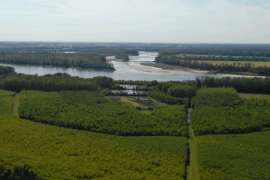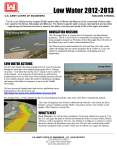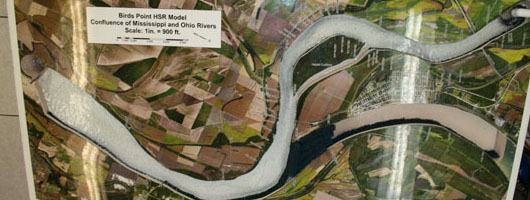During the annual low water inspection flight in 2012, significant gravel and cobble deposits were noticed at 6 locations. The photos in this PDF show those locations from both air and the ground. Other photos of sandbars were also included to show the noticeable difference in color between sand and gravel bars from the air. Some of the gravel deposits appeared to be recent due to the leading edge of gravel waves at the lower ends of the some of the bars that appeared to be covering previous deposits of sand and old vegetation
http://mvs-wc.mvs.usace.army.mil/arec/Reports_Geomorphology.html
“Significant Gravel Bars Middle Mississippi River (2012 Low Water Photos)“





